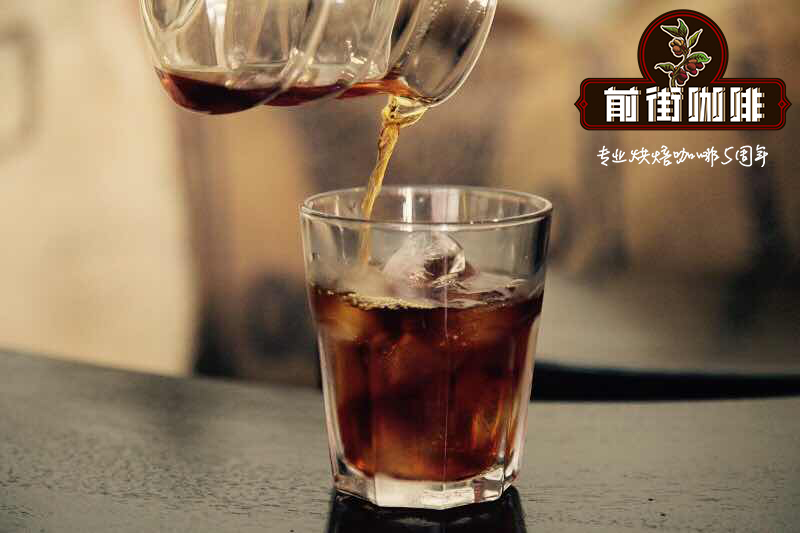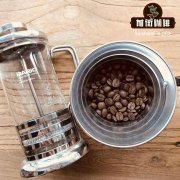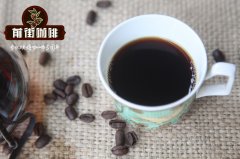Ivory Coast coffee beans | Ivory Coast coffee | Robles special planting environment and brewing reference?

Professional coffee knowledge exchange More coffee bean information Please pay attention to coffee workshop (Weixin Official Accounts cafe_style)
Ivory Coast Coffee| Cote d'Ivoire Coffee Roberts Special Growing Environment and Brewing Reference?
Cote d'Ivoire is a coastal country on the eastern coast of the Atlantic Ocean. Its coastline is 550 km long. It is flat in the southeast, slightly undulating in the north and mountainous in the west. It has a tropical marine climate, with rainy and dry seasons throughout the year, with heavy rainy season from May to July, light rainy season from August to November, and dry season in the rest of the year. The annual average temperature is 27 degrees Celsius. Rainfall in the south is more than that in the north, with an average annual rainfall of 1,400 mm. Since coffee beans are Cote d'Ivoire's second largest export commodity, the country's coffee industry is particularly important to the local economy. Cote d'Ivoire was Africa's largest coffee exporter from the 1970s to the 1980s and is now one of the world's largest robasta coffee producers.
Cote d'Ivoire never produces the best quality coffee, and very little coffee comes from the arabica tree. In the early 1980s, it was the third largest coffee producer in the world, producing 5 million bags a year. Even today it is the fifth largest coffee producer in the world, producing 4.4 million bags a year. Cote d'Ivoire is second only to Indonesia (6.8 million bags per year) in terms of production of Roscoff coffee. It is worth noting that Cote d'Ivoire is a major centre for coffee smuggling, with up to 2600 tons smuggled in 1993- 1994, mainly via neighbouring Mali and Guinea.
Cote d'Ivoire's cocoa and coffee producing areas are distributed in the forest areas in the east and west, and the west is currently the main producing area. Cocoa cultivation technology was introduced from Ghana, a neighboring country in the east, and gradually expanded from east to west. The cultivation area has reached more than 2.21 million hectares. The growth period of cacao trees is generally about 40 years. The new species of trees begin to produce fruit after 5-6 years, enter the high yield period after 8-10 years, begin to decline after 30 years, and stop producing fruit after 40 years. Cocoa trees in the eastern part of the country have begun to age and yield less. In 1978 Cocoa replaced Ghana as the world's largest producer and exporter of cocoa. At present, there are about 620,000 family-owned plantations. In the early 1990s, the Government encouraged cooperative movements. To date, about 30 per cent of growers have organized cooperatives and 50 per cent have participated in cooperative mutual assistance activities. Cocoa yields about 400-700 kg/ha and coffee yields about 200-300 kg/ha. During the harvest period of 1995/1996, cocoa production exceeded 1 million tons and remained basically above 1 million tons. In 2003, the annual output was 1.31 million tons, accounting for 42% of the world's total output of 3.1 million tons. The annual production of coffee fluctuates greatly, ranging from more than 200,000 tons to more than 300,000 tons.
The Government of Cote d'Ivoire has begun to take positive measures to reverse this situation. The National Coffee Board has been reconstituted and streamlined, and some production activities have been transferred to private companies. The Government provides minimum price guarantees to farmers who produce high-quality coffee and encourages exporters to buy directly from farmers. Eighty per cent of coffee exports now find a market in the European Community countries, with France and Italy being the main buyers. It is worth noting that Cote d'Ivoire is a major centre for coffee smuggling, with up to 2600 tons smuggled in 1993- 1994, mainly via neighbouring Mali and Guinea.
Cote d'Ivoire (Cote d'Ivoire) Roberts specialty coffee beans (located in the West Bank of Africa)
Cote d'Ivoire is a country in West Africa, next to Guinea and Liberia. Cote d'Ivoire is a French translation of the name, if the pronunciation of the literal translation is Cote d'Ivoire. Coffee, along with cocoa and palm trees, was grown in large quantities on the coast to stimulate exports under French rule. By the 1960s, coffee production had increased, making Cote d'Ivoire the third largest coffee exporter after Brazil and Colombia. Coffee in Cote d'Ivoire is almost exclusively robasta, with only a few experimental Arabica varieties.
As mentioned above, because of its special taste and characteristics, Robasta coffee is mostly used for blending instant coffee or canned coffee, and rarely drunk directly in the form of fine coffee, so it does not often appear in the coffee producing countries we often mention.
In the 1980s, Cote d'Ivoire produced only 250 kilograms of coffee per hectare. This is partly due to poverty, but also to the ageing of coffee trees. Lack of investment and absence of a long-term business plan also affected coffee production. The Government of Cote d'Ivoire has begun to take positive measures to reverse this situation. The National Coffee Board has been reconstituted and streamlined, and some production activities have been transferred to private companies. The Government provides minimum price guarantees to farmers who produce high-quality coffee and encourages exporters to buy directly from farmers. Eighty per cent of coffee exports now find a market in the European Community countries, with France and Italy being the main buyers.
Front Street Recommended Brewing:
Filter cup: Hario V60
Water temperature: 88 degrees
Polishing degree: Small Fuji Polishing degree 4
Cooking method: water-powder ratio 1:15, 15g powder, first injection of 25g water, stewing for 25s, second injection to 120g water, water cut off, wait for the powder bed water to drop to half, then inject water slowly until 225g water, extraction time about 2:00
Analysis: Three-stage brewing, clear coffee before, during and after the flavor. Because V60 has many ribs, the drainage speed is faster, and the extraction time can be prolonged when the water is cut off.
Important Notice :
前街咖啡 FrontStreet Coffee has moved to new addredd:
FrontStreet Coffee Address: 315,Donghua East Road,GuangZhou
Tel:020 38364473
- Prev

90+Lomi Tasha Lomitasha Lime Coffee beans how to drink _ wash Yega with Ethiopian water
Professional coffee knowledge exchange more coffee bean information please follow the coffee workshop (Wechat official account cafe_style) Ethiopian Coffee Lomitasha Manor LomiTasha washed coconut with snow phenanthrene soft lime Soft Lemon LomiTasha (Lomitasha flavor: soft lemon, honey, wild ginger, delicate green tea taste hand flush: Ethiopian water washed Yega
- Next

Colombian Cauca Valley Caicedonia | Sudan Rumei RS-510 exclusive race bean wind
Professional coffee knowledge exchange more coffee bean information please follow the coffee workshop (Wechat official account cafe_style) Colombia Cauca Valley Caicedonia | Sudan Rumei RS-510 exclusive race bean flavor? What is the origin of Sultan Rumei? In 1942, the Boma Plateau region of the Poma Plateau in the southeast of the Republic of Sudan was discovered, very close to Ethiopia.
Related
- Detailed explanation of Jadeite planting Land in Panamanian Jadeite Manor introduction to the grading system of Jadeite competitive bidding, Red bid, Green bid and Rose Summer
- Story of Coffee planting in Brenka region of Costa Rica Stonehenge Manor anaerobic heavy honey treatment of flavor mouth
- What's on the barrel of Blue Mountain Coffee beans?
- Can American coffee also pull flowers? How to use hot American style to pull out a good-looking pattern?
- Can you make a cold extract with coffee beans? What is the right proportion for cold-extracted coffee formula?
- Indonesian PWN Gold Mandrine Coffee Origin Features Flavor How to Chong? Mandolin coffee is American.
- A brief introduction to the flavor characteristics of Brazilian yellow bourbon coffee beans
- What is the effect of different water quality on the flavor of cold-extracted coffee? What kind of water is best for brewing coffee?
- Why do you think of Rose Summer whenever you mention Panamanian coffee?
- Introduction to the characteristics of authentic blue mountain coffee bean producing areas? What is the CIB Coffee Authority in Jamaica?

